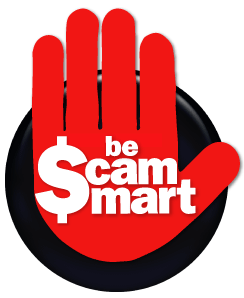]]>
We now have the opportunity to pro actively address the shadow, or toxic side of the jewelry industry in a truthful way. The emotional trigger issues, such as mining, blood diamonds and a host of other concerns actually make our industry a very easy target.
As jewelry designers and manufacturers, we can embrace this opportunity or we can continue to live in denial. If we choose the latter, we run the risk of unsympathetic people running full page ads in the New York Times, simplifying the complexities to push their own agendas-similar to what happened with the fur industry in the seventies and eighties. It seems that the industry has gotten away with its complicity in the death of 3.7 million Africans in the blood diamond genocide. But just imagine, for example, what would happen if Al Qaeda was caught using diamonds to finance operations that killed just one American. It would tarnish the whole industry.
Of course, we all know that blood diamonds are a red herring, a symptom of a much greater issue which is industry wide: ethical sourcing based on fair labor and environmentally responsible practice. These issues, and the real havoc involved in the destruction of communities involved the unethical trade, have taken a back seat to the drive for profit.
For those of us in the jewelry industry, the moral questions require truthful soul searching. Would you or your customer feel good about a wedding ring if it was created by maltreated labor or materials that trashed the environment? Is ignoring this question morally acceptable? Does our expression of love (and that is often what jewelry is about for us and the customer) just extend to our intimate ones; or beyond them to the greater human family? Or is your jewelry business, what you really pay attention to, just about love of the bottom line? If that is the case, what will that leave when you die? It takes real courage to even consider these issues, but there is a greater danger for those who ignore them.
As a nation, some of our most eminent perils are rooted in a culture that encourages the perspective that we can buy, fight or manipulate our way into safety. Yet there is another more effective approach. My company designs and manufactures contemporary versions of ancient European, tribal knot work motifs that symbolize the interconnectedness between individuals and communities. The matrix of every business, its source of wealth, comes from communities. Communities that are strong are based on circles of fair exchange, not pyramids where all the benefit goes to a select few at the top.
Instead of always trying to be on top, what if, within the context of sound economics, we directed some of our attention to weaving a tapestry of truly mutually beneficial relationships between us and those communities who we do business with, all the way down our supply chain?
The Fair Trade initiative in our industry is an opportunity to make the world a better, safer place, but there are several challenges ahead. It is a matter of integrating personal ethic and values into ones business practice and becoming part of what I call the “moral minority.”
We are not trying to equalize economies here. But there is a recognition that a few dollars more in a developing country where a piece of jewelry is made or a component, sourced, would mean the difference between food and education or miserable poverty. Certainly, the problem does not lie with most consumers, many of whom would gladly pay an extra dollar. The issue lies with the mentality of the supply chain which is constantly trying to squeeze the person below him, creating a downward spiral which keeps those on the edge of poverty impoverished, still.
Some larger companies, such as the Rapaport Group and Columbia Gemhouse, have assumed leadership in this emerging sector concerned with ethically produced jewelry products. Small jewelry manufacturers are also involved, but they face difficulties because the market and supply chain have not yet been developed. A small company can have thousands of inventory pieces from all over the world. Few precious and semi-precious stones are fair trade produced.
Outside of sourcing, the manufacturing of jewelry is going to be extremely difficult to mold as defined by Fair Labeling Organization (FLO). As of now, fair trade products produced in the developing world are organically grown and produced in cooperative settings. Jewelry does not fit this model. First, there’s the initial investment in equipment which someone in the developing world could not easily afford. Second, there is strict quality control and on time issues. Third, cost of raw materials can be an obstacle even to someone in the developing world with financial resources easily at hand.
The challenge of bringing the concept of fair trade, or something equivalent, into the jewelry business, will be met if there is sufficient market demand. But therein lies the fundamental issue: how can the market be created if the supply chain is not established?
A few manufacturers are currently working on the forefront of these issues, trying to establish models that others can follow.
Those companies working to change the way business is done in the jewelry industry do see a large and growing demographic who are concerned about Fair Trade. These are the same people who buy organics-one of the biggest growth industries. They are wealthy and educated. They are extremely loyal and want their purchases to support their values. Those supporting Fair Trade see a huge opportunity to profit while making the world a better place.







